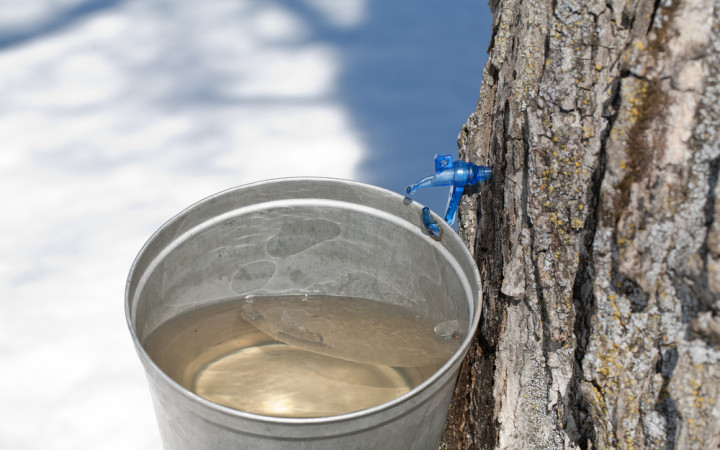Stacks of flapjacks would taste rather bland without the sugary maple syrup we love to pour over them. Although many other forms of sweetness begin with sugar cane, maple syrup gets its start in the heart of a tree.
When the first signs of spring — like melting snow and chirping birds — start to appear, people all around the world start tapping into maple trees. Maple trees of all varieties — sugar maples, red maples, silver maples and even the box elder — contain sweet sap that starts to flow early in the spring.
To collect the tree sap to turn into syrup, you must first tap the tree. You'll need a sap spout, a sap bucket and a cover to keep rain and snow out of the bucket. You'll also need a maple tree, of course!
Choose a maple tree that's at least 40 years old. You can assume a maple tree is that old if it's at least 14 to 18 inches in diameter. When you've found a suitable tree, determine which side receives the most sunlight.
Using a 3/8-inch drill bit, drill a hole approximately 2 inches deep on the sunny side of the tree. Make the hole about waist high and angle it upward into the tree, so that sap will flow out more easily.
Next, hammer the sap spout into the hole and hang the bucket from the spout's hook. Be sure to tap each tree only once. How much sap flows into your bucket will depend on weather conditions.
The best time to tap a maple tree is when the temperature during the day reaches 40° F to 50° F but still dips slightly below freezing at night. This combination of temperatures pushes the sap up from the roots into the trunk and branches of the tree, where it freezes.
When it warms up during the day, the sap will run out of the spout and into your bucket. The flow of sap will stop when temperatures do not go above freezing during the day or below freezing at night.
Fresh sap from a maple tree is clear and looks like water. It takes roughly 40 to 50 gallons of sap to make just one gallon of maple syrup. One maple tree might produce up to 40 quarts of sap over a four- to six-week period in the early spring, which would yield about one quart of syrup.
To turn fresh maple sap into syrup, you need to boil it. This process will evaporate all the excess fluid, leaving only pure, sweet sugar syrup. It's best to boil fresh sap within a day of collecting it from the tree.
Because the boiling/evaporating process produces a lot of steam, many people choose to boil sap in the backyard on a gas grill. As the excess water in the sap evaporates, the sap gets thicker and starts to turn golden brown.
When the temperature of the sap nears 212° F and begins to boil in earnest, the syrup will double in volume. It will not be finished, however, until it reaches 219° F, so an accurate thermometer, such as a candy thermometer, is a necessity.
You must be careful not to overcook the syrup, which can burn easily and ruin not only the syrup, but also whatever pan you use to boil it in! Once it's finished, put your fresh maple syrup in jars and keep it refrigerated.




